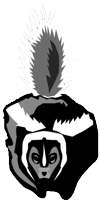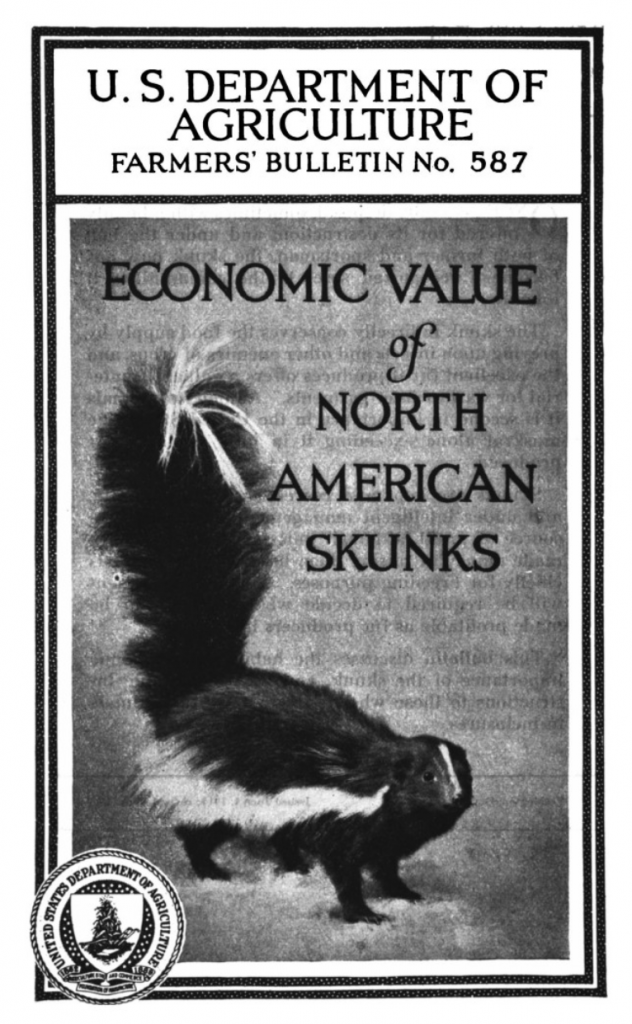
Have you ever been to a skunk farm? Since U.S. skunk farming had come to a close by the 1930s, the answer is probably not. But did you even know that skunk farms actually used to exist?
In fact, skunks have long played a part in agriculture in the United States. From eating harmful bugs and destructive rodents to being a valuable source for fur, skunks have a long history of being farmer’s friend.
The value of skunks was discussed in depth in a booklet published by the U.S. Department of Agriculture in 1923, written by David E. Lantz.
In explaining the importance of skunks, Lantz wrote:
The skunk indirectly conserves the food supply by preying upon insects and other enemies of crops, and the excellent fur it produces offers a valuable material for warm winter garments. Among fur animals it is second in importance in the United States, the muskrat alone exceeding it in total value of fur produced.
Lantz, David E. Economic Value of North American Skunks, pamphlet, 1923; Washington D.C..
Trappers would trap skunks for their pelts. And later, up until the early 1900s there were actually skunk farms across North America.

SKUNKS AS PEST CONTROL
Skunks also played a very important role in maintaining farm ecosystems by eating bugs harmful to wheat, corn, potatoes, grain and other crops. Not only that, but skunks are known for specifically eating bugs most harmful to farmers, such as grasshoppers, grubs, beetles and certain types of worms and moths.
Skunks also help keep farm yields (or the total amount of a harvest) healthy by killing small rodents that often destroyed crops.
In fact, in the Farmer’s Bulletin, Lantz wrote, “Reports from various parts of the country show that close trapping of skunks and other fur animals is often followed by an increase in depredations by mice.” (Here, the word depredations refers to mice destroying, eating or getting into crops or grain.) In other words, the more skunks caught by trappers – meaning the less skunks there were in nature – the more destruction mice caused for farmers. This was because there were less skunks around to eat mice.
SKUNKS FOR FUR
However, this did not stop skunks from being trapped and farmed for their fur. As you can see from the table below, a LOT of skunk pelts were sold in the early 1900s in the United States.

Of course, the present-day demand for skunk fur has dropped dramatically. In 1914, almost 2 million skunk pelts were sold. A century later, at the North American Fur Auction (where most of modern day North American skunk fur is sold), only 1,600 total skunk furs were sold during June and July 2015. You don’t even have to be good at math to realize that’s a far cry from the hundreds of thousands of skunk furs sold per month one hundred years ago.
FUN FACT
There are 11 different species of skunks. Different species have different fur patterns. Some species have versions of the stripes we typically think of when we think of skunks, but others look almost spotted.
PARTING WORDS
Skunks are crepuscular. Crepuscular means they are most active at dawn and dusk. They are also terrestrial, meaning they live on the ground. In fact, they live in holes they dig into the ground called burrows.


Pingback: Understanding averages using skunks